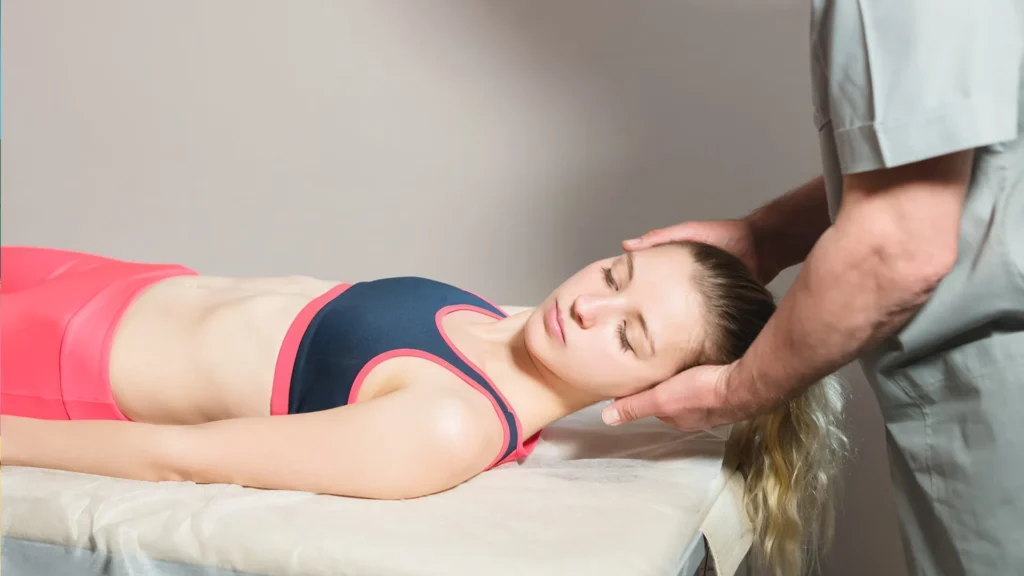Pain from the neck, chest and back make up a huge percentage of the people we see. This is not surprising when we know that low back pain and neck pain are two of the leading causes of disability in the world. The problems originating in the spine can be numerous as it is a common source of referred pain. Spinal physiotherapy includes treatment from the top to the bottom (literally!).
The neck commonly refers pain to:

Chest and upper back pain can be very distressing as it can interfere with your breathing or the location can cause you to think it is coming from your heart or a broken rib. Obviously, we recommend that if you suspect you might be getting cardiac pain, you should seek immediate medical care.
Middle back pain can be from postural causes or twisting and lifting awkwardly when you are not used to it. This can give quite sharp pain in the chest and interfere with your breathing. The muscles in the back and the little joints are often sources of pain that can be eased with local manipulation or soft tissue massage. Trying to remain active is the goal, and some local treatment may be helpful in assisting you back to activity.
Low back pain is by far the most common area we see within the clinic and there is a lot of misinformation around spinal pain and low back pain that can actually make the problem much worse.
For instance, the following beliefs are really common but are not true:
Try to remain relatively active (walking, low level activity), take pain medication if you need it, you can use heat to ease the pain if that feels good, and gently stretch. There are often other contributors to back pain – eg stiff hip, sedentary lifestyle, stress, so establishing the drivers for the problem will be picked up during a thorough examination. Seeing a good physiotherapist is recommended by the HSE and the NHS. Fortunately, that is something we definitely have. Then it is a process of building back to the level of activity you want to achieve. Building strength and mobility through gradually exposing you to more and more load. We would then act as coach and rehab therapist to build you back to fitness.
Note: spinal pain of a serious cause does exist, and we all need to be aware of the signs and symptoms, but it is rare. If you have these symptoms you need to go to the hospital for immediate care. These red flags can be a sign of more serious pathology:
Undergoing a thorough examination to establish the location of the problem and the cause is critical to getting a good outcome. This is often difficult to do yourself. We are all highly trained in the pattern recognition and techniques required to make an accurate diagnosis possible.
Try to keep yourself mobile, and doing gentle stretching can be really helpful. Most problems are not serious and do resolve.
If you have any questions or would like to book an appointment at one of our Edinburgh physiotherapy clinics, contact us.
There are clearly lots of things to consider on your road to recovery and there are lots of potential things to measure. This can help inform us as to how you are progressing. Patient assessments may be from self reported questionnaires, range of motion, muscle strength, agility, dexterity or general function. Your physio may look to perform these assessments at various stages of your recovery. These assessments can be quite simple to perform and can be good for you to monitor your own progress. They may be a bit more technical, like the isokinetic strength testing on the biodex.
If you are looking for help to feel better, you can contact us to make an appointment at one of our four Edinburgh Physiotherapy clinics or to discuss any questions you might have.
Expert physiotherapy from professionals, registered with the Health Care Professions Council and all the major insurance companies. Based from four clinics covering all areas of Edinburgh.
©2025 Physis Physiotherapy | Powered by 291 Media